
Update – Nov 13th, 2023 – My full Suunto Race in-depth review after 30 days has been posted here, where you can dive into accuracy, long-term usage, and plenty more.
Suunto has just announced their newest watch, the Suunto Race. This watch essentially takes the existing Suunto Vertical endurance-sports focused watch that was released this past spring, and gives it an AMOLED display. Alongside that, it gets an updated user interface and a number of new software features (which will also be ported back to a number of other existing Suunto watches). Oh – and for arguably the first time in recent memory, Suunto has absolutely slaughtered the competition on price here. The base unit is priced at just $449, including a sapphire crystal display and stainless steel case.
As expected, this year is really going to mark the peak transition of almost all sport watches to AMOLED displays. With battery life continuing to climb in these models, and consumer demand stronger than ever for the more brilliant displays, it was only a matter of time before Suunto started making that transition as well. Albeit, this isn’t their first AMOLED watch. You may remember the WearOS-based Suunto 7, which has an AMOLED display too. Albeit, in watch years, at 3 years old, that watch is far less capable than this one from a display, battery performance, and especially accuracy standpoint.
Now for this post, I’m keeping it as a ‘hands-on’ post, versus an in-depth review. It was honestly a close call for me as to which way to go, but there were a few use cases I wanted to explore (including some more super-long activities). I had one very long hike back in early September in the Alps, but want to do a few more over the next week into the jungles of Hawaii. Additionally, there’s a few recently enabled features on the watch that I want a bit more time testing. Thus, expect a full in-depth review shortly, but just not today.
Oh…wait, one more thing: Suunto has released a new pair of headphones, called the Suunto Wing. I’m not kidding. These sport-focused headphones are designed by Suunto and include LEDs on the side for visibility, as well as what Suunto is explicitly noting as “shower resistance” levels of waterproofing. Obviously, that’s something I’ve tested.
More on that in a separate post.
What’s New:
Now, let’s take a look at a blend of what’s new on this watch, as well as general specs. As I noted above, this watch is essentially the companion to the MIP-based display Suunto Vertical. It’s effectively a mirror in the same way that Garmin has the Fenix (MIP screen) and Epix (AMOLED screen). Just like that arrangement, Suunto is expecting to keep these two virtually identical from a software standpoint. Instead, the main differences will of course be the display and battery life as a result of that. As one might expect, there will also be very minor user interface differences with colors/clarity of course, due to the higher resolution of the AMOLED display – but nothing impacting functionality.
So, here’s what’s on the Suunto Race:
– New 1.43” AMOLED touch screen, 466x466px at 1,000 nits
– GPS battery lifetime starting at 40hrs in multiband/dual-frequency (and up to 120 hours in ‘Tour’ mode).
– Standby/smartwatch battery life of 12 days in gesture-based display mode, or 7 days in always-on display mode
– Adds digital crown
– Adds new nightly HRV tracking, as well as HRV trending features
– Adds Suunto Coach integration with aforementioned HRV tracking (will give guidance inclusive of HRV changes)
– Adds workout planner to the watch itself (plus mobile app and TrainingPeaks)
– Adds Training widget/watch face with TSB/CTLHRV
– Adds new daily companion, new daily widgets, new mini widgets
– Adds sleep stages shown on-watch
– Adds ability to do multiple alarms (e.g., wake-up alarms)
– Adds ‘Find my Phone’ functionality
– Adds ‘Stand-up’ reminder
– Adds ‘Progress’ running race estimates & HR run threshold
– Adds new sport mode…umm…Rope Skipping
– Adds customization of the widgets
– Adds do-not-disturb mode
– Improved music control touch controls (for controlling phone music)
– First Suunto watch using fully in-house algorithms, transitioned away from FirstBeat algorithms
– Retains existing snorkeling depth gauge features, with existing 100m rating
– 22mm industry standard strap (silicon strap included in the box)
– Retains/has military durability specifications
– Two model options: Titanium ($549/EUR) or Stainless steel ($449/EUR)
– Titanium has 32GB of storage, and stainless steel has 16GB.
– Sapphire crystal display on both models
– Weight comes in at a claimed 69g for titanium, and 84g for stainless steel
Now, in addition to all the above built-in features, there’s also the just-released Suunto-developed slate of a dozen+ app functions. While most other companies have built these features into the watch natively, Suunto still has these technically as apps that run optionally on the watch. Thus normally, for other companies, I’d probably include them in this list, and it’d be a heck of a lot longer list. But alas, since they aren’t part of the native watch firmware (yet), I’ll refer you to that dedicated post from a couple weeks ago. But this does include components like nutrition reminders, race companion apps, waypoint apps, altitude profile apps, race elevation apps, and more.
Switching topics, since I’m not doing an official in-depth review today, I’ll give you a small sneak at the box. Simply because it’s a new box design for Suunto:
Note that said box is admittedly a bit overkill on size/space. Suunto has actually been one of the leaders from an environmental standpoint in terms of their claims around watch sustainability. They’ve got entire documents outlining how the watches are made from a materials and manufacturing (electricity) standpoint, as well as the fact that they carbon offset the entire lifespan of the watch too (meaning, all your potential/future charges). So while I’ll give them all the design points in the world, more than half of this beautiful new box is literally just empty space/air. Slice off the bottom of the box, and nobody will notice. It’ll still look pretty, and they can pack twice as many of these watches in the same container or pallet.
And for fun, here’s how the Suunto Race looks side-by-side with the also-new Polar Vantage V3 and Garmin Epix Pro. Normally I’d really compare this against the Garmin Forerunner 965 (as that’s priced more similarly at $599), but somehow I forgot that on my desk, so I don’t have it on this trip. Fear not, the in-depth review will cover that.
And a shot from down low:
With all that unboxed, let’s dive into the usage.
AMOLED Display & New User Interface:
First up is the new display with a correspondingly new user interface. The display itself is 1,000 nits, or essentially the same display brightness as other endurance-focused watches by Garmin and Polar. As I’ve said in those posts, the current-gen AMOLED displays are more than bright enough for even bright sunny conditions. That wasn’t always true just a few years ago, but these days the technology has improved enough that visibility simply isn’t a concern in active use.
For fun, here’s a photo taken in bright sunny conditions yesterday in Hawaii. Thus, very bright mid-afternoon sun in the middle of a lava field. Very visible.
Like other AMOLED watches, you’ve basically got two core modes: Always-on and gesture-based. The default is gesture-based, meaning the display turns off when you put your wrist down. The watch is still recording of course, just not showing anything. Then, once you raise your wrist, it turns on. Whereas always-on (what I’ve been using), the watch goes to a dimmed state when you put your wrist down, and then upon wrist-raise it turns on. Generally speaking this is reasonably quick, though I’d like to see it a bit faster on the Suunto Race.
As you scroll through the new user interface you’ll see you’ve got so-called ‘Mini-Widgets’, which are the tidbits of information you see each time you scroll, and then you can tap into them to get full-sized widget information, which has more data pages.
One of those widgets is the new HRV tracking widget. Like other companies, this has basically two levels to unlock. Actually technically, in Suunto’s case it’s more like three levels. The first thing you’ll unlock is last night’s HRV value, once you sleep with the watch. Then, after three nights, you’ll get the last 7-days averaging value (obviously, it’ll account for the full seven days, but the average starts to appear after 3 nights).
Then, the holy grail is getting your HRV status, which shows how you trend relative to your baseline. You’ll get that after 14 nights’ worth of data. Right now, given all the new watches I’ve had on my wrist each night, I’ve somewhat run out of nightly wrist space to unlock that quite yet, one of the reasons I’m holding the review. I should finally clear that in the next few days. But here’s what it looks like:
What’s notable here is that the Suunto Coach feature, which gives training and recovery guidance, will now account for HRV values. Thus, if it sees your HRV values tank, without a corresponding reason for it (e.g., higher training load), it’ll give you a heads-up that maybe you’ll want to consider changing your plans a bit.
Meanwhile, back on the watch face, you can display these new metrics, including HRV status as well as TrainingPeaks metrics CTL (Chronic Training Load) & TSB (Training Stress Balance):
As far as user interface speed – it’s definitely improved, though I’d argue it still lags a bit in areas where you’ve just initiated/opened that area. For example, if I swipe down from the watch time, the very first time I do that since raising my wrist, there’s a bit of lag. Whereas subsequent movements in that area/region are fine. Same goes for other menu areas.
Lastly, looking at the optical sensor package, it’s the same as on the Suunto Vertical, as is the charging port:
Additionally, the straps are standard 22mm bands, so you can swap those out as you see fit.
Feature Upgrade Chart:
Now, there are a lot of new features on the Suunto Race that I briefly touched on above – and the good news is almost all of those are coming to existing watches. Here’s a chart showing what’s coming to which watches, and this is just for the ‘Fall’ update this year. It sounds like more things are slated beyond that:
As always, it’s great to see companies pushing firmware updates back to older watches, and doing so quickly after release.
Wrap-Up:
There’s no two ways about it: Suunto’s pricing here is the big story. Which is funny, because the watch itself is a big leap up for the company, even a moderate leap up from the Suunto Vertical. But with pricing at $449, Suunto is aiming to undercut everyone. Sure, there’s the most obvious two: Polar’s just-released Polar Vantage V3 at $599 and Garmin’s Forerunner 965 at $599. But frankly, Suunto is also kicking the legs out of COROS and their Vertix 2, and even their APEX 2 Pro at $500. Garmin is of course in the strongest relative position here, merely because it has a broader set of features to make up for it. But compared to the others, Suunto is delivering in a lot of other areas.
The AMOLED display is on par with all of the others in this realm, and the GPS accuracy thus far in my testing appears to be consistent with the Suunto Vertical – which was largely in the market-leading group. Accuracy of the heart rate is an area I’m still digging into all my sets on, though it wasn’t quite as strong on the Suunto Vertical as some of their competitors.
From a user interface standpoint, the new UI is much cleaner. A big step up from the previous units. The widget flow is cleaner now, as is the coloring and just visibility. I’ve had no issues with the AMOLED display in either crazy bright conditions or dark conditions. About my only nitpick as I noted in the video is that I see a bit of lag when opening up certain menus. I wish that were a bit faster.
Still, this is a huge step forward for Suunto, and I think really sets their course in the right direction. I’d love to see them build upon the features here, such as including some form of a ClimbPro type competitor. I think that’s really one of the bigger missing pieces for any watch that’s designed for the mountain scenarios. Suunto has some look-ahead features that give you a glance at things, as well as waypoint functionality, but having automatic climb categorization/details would be a big improvement.
Again, stay tuned for the full in-depth review – it likely won’t be long. I just have a few more areas I want to dig into more deeply, namely really long activities as well as some of the HRV status bits. With that, thanks for reading!
Found This Post Useful? Support The Site!
Hopefully you found this review/post useful. At the end of the day, I’m an athlete just like you looking for the most detail possible on a new purchase – so my review is written from the standpoint of how I used the device. The reviews generally take a lot of hours to put together, so it’s a fair bit of work (and labor of love). As you probably noticed by looking below, I also take time to answer all the questions posted in the comments – and there’s quite a bit of detail in there as well.
If you're shopping for the Suunto Race Stainless Steel (16GB) or any other accessory items, please consider using the affiliate links below! As an Amazon Associate I earn from qualifying purchases. It doesn’t cost you anything extra, but your purchases help support this website a lot.
Here's a few other variants or sibling products that are worth considering:
And finally, here’s a handy list of accessories that work well with the Suunto watches. Given the unit pairs with standard Bluetooth Smart sensors, you can use just about anything though. I'd recommend the Garmin bike sensors over the Wahoo ones, merely because the Garmin have two concurrent Bluetooth channels versus one for the Wahoo RPM/SPEED sensors.
And of course – you can always sign-up to be a DCR Supporter! That gets you an ad-free DCR, access to the DCR Quarantine Corner video series packed with behind the scenes tidbits...and it also makes you awesome. And being awesome is what it’s all about!
Thanks for reading! And as always, feel free to post comments or questions in the comments section below, I’ll be happy to try and answer them as quickly as possible. And lastly, if you felt this review was useful – I always appreciate feedback in the comments below. Thanks!




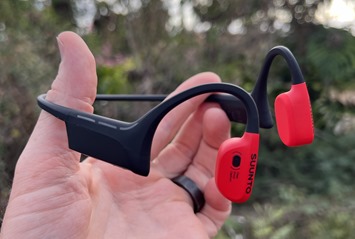
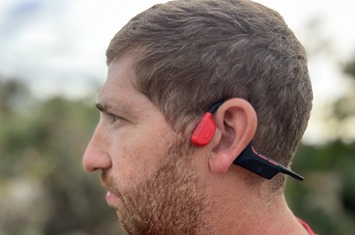
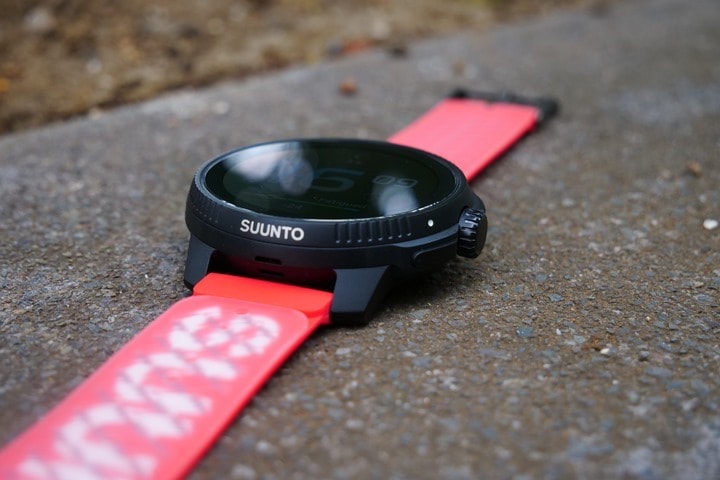
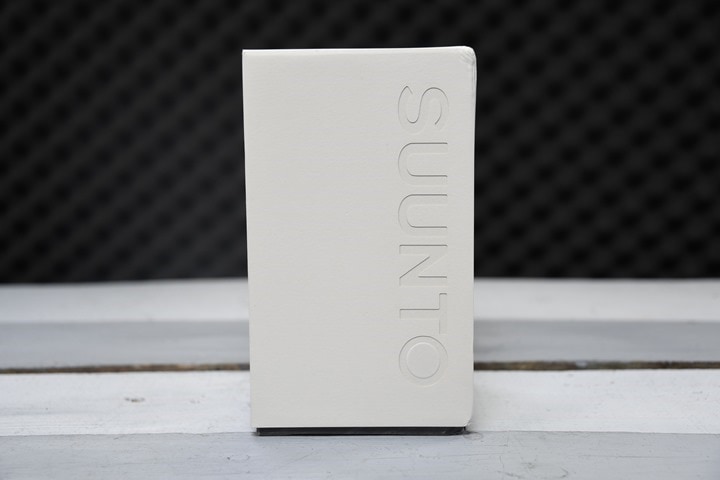
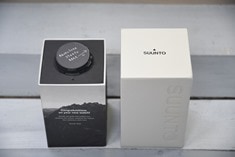
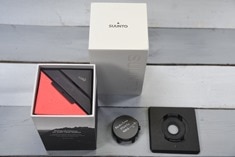


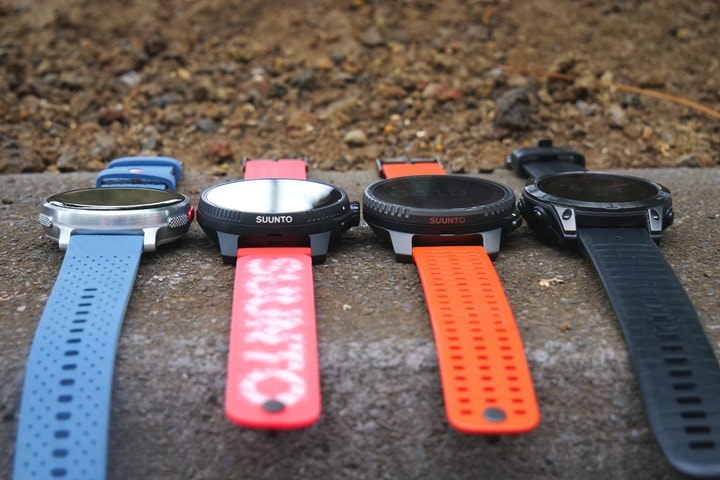
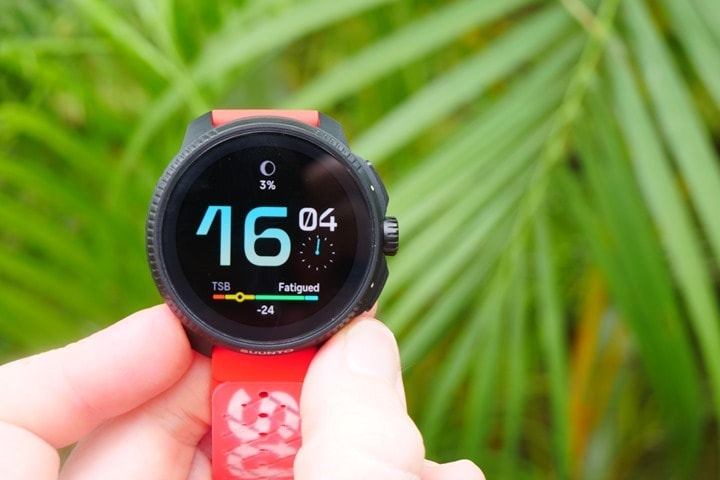
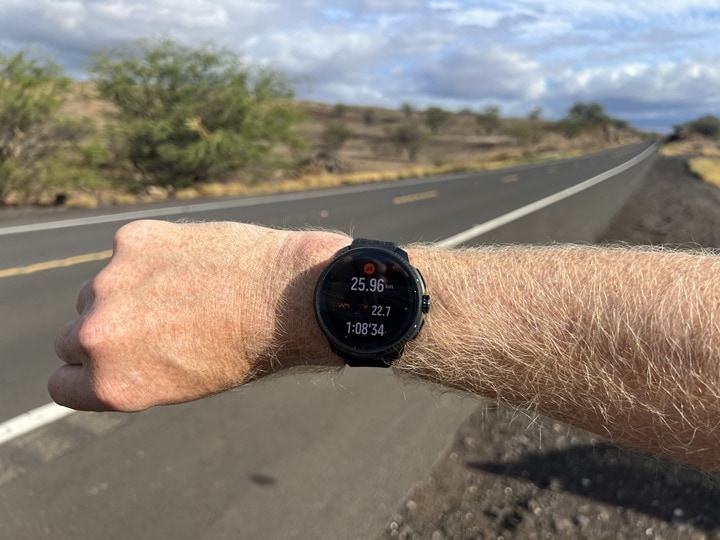
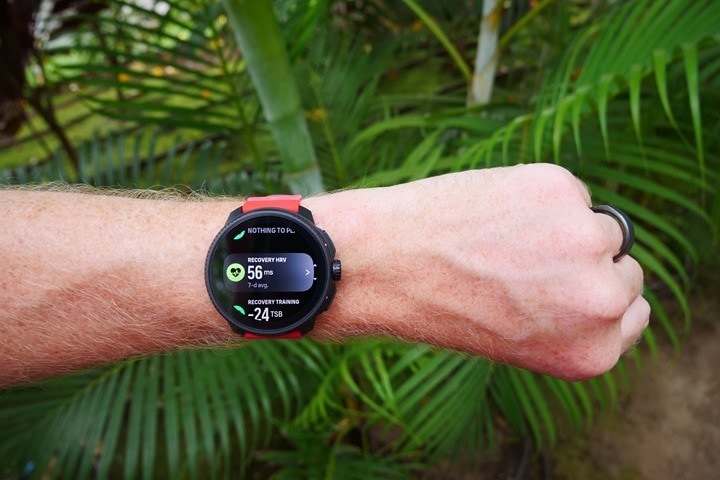
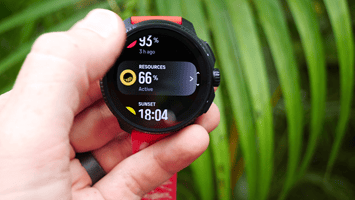
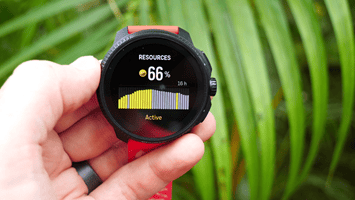
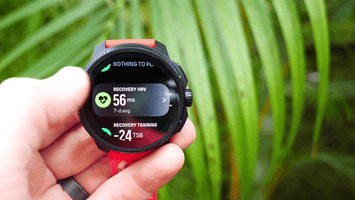
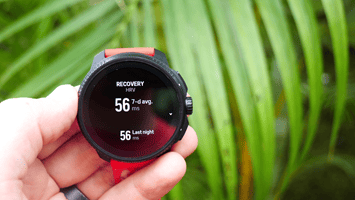
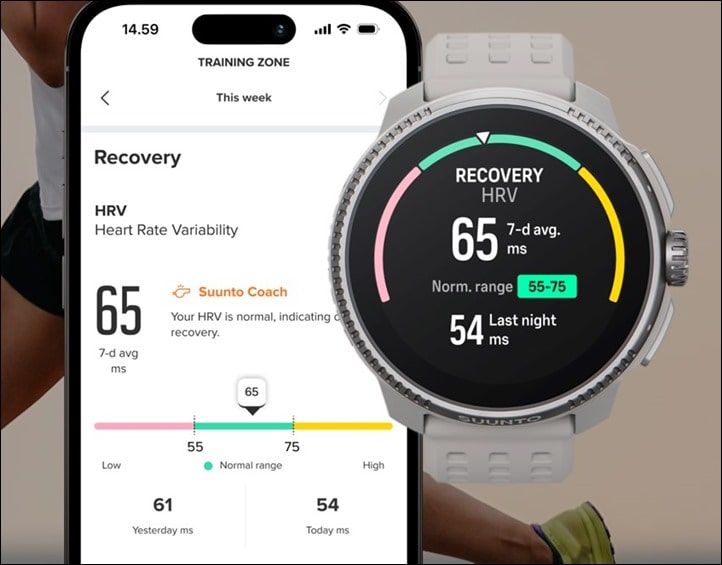
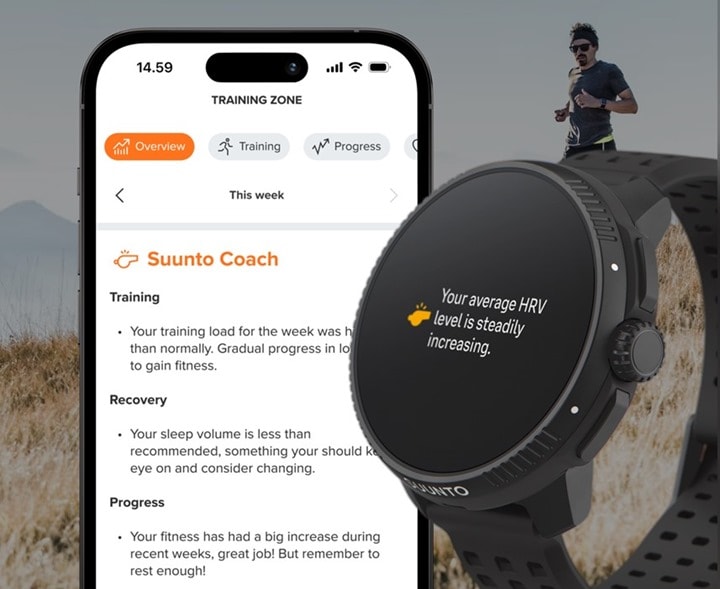
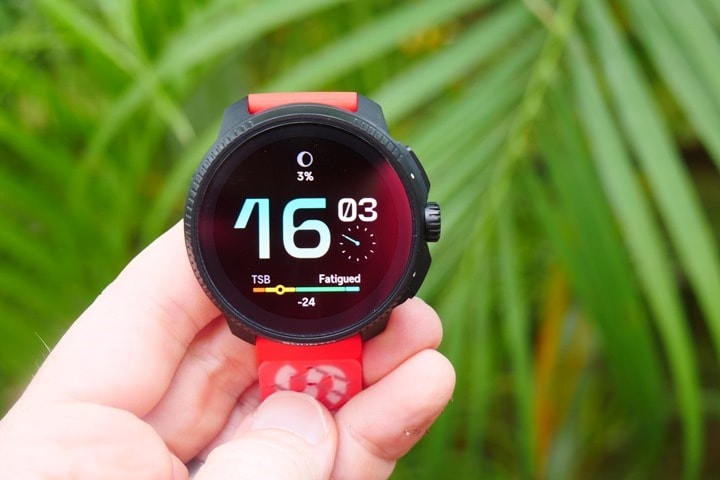
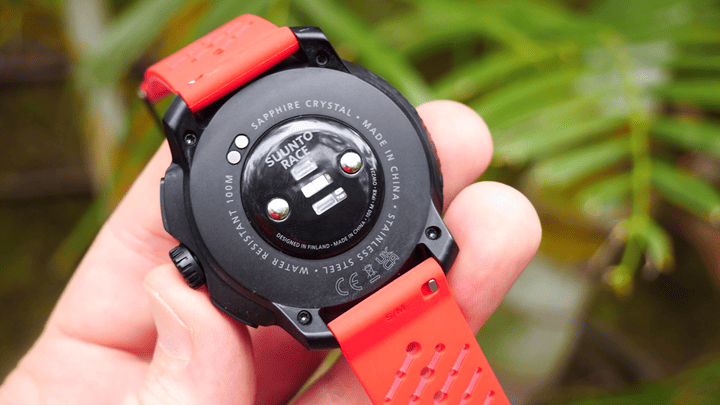
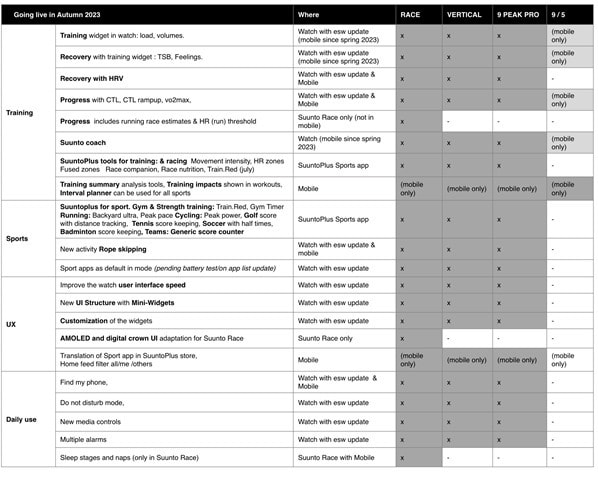

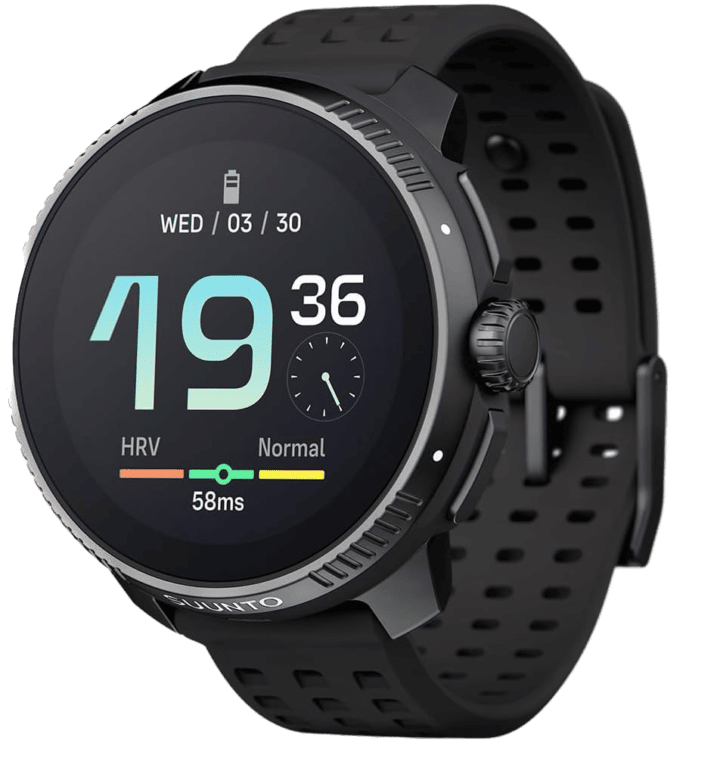
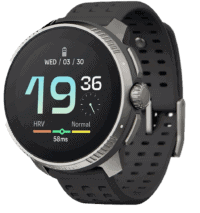


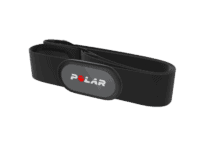
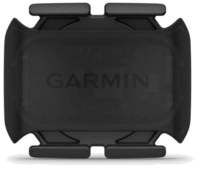
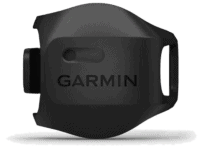
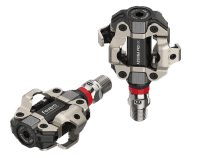
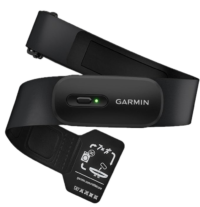

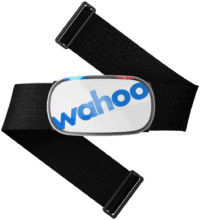


















Hi Ray,
Thanks for delivering this review! Pretty interested in this one as I’m thinking to jump back into the Suunto ecosystem. Two things that they’ve lacked in the past is:
* HR Broadcast (so broadcast the HR to another device like Zwift or a bike computer)
* The option to fully turn-off the device. (some Suunto’s simply can’t be turned off)
Would you be able to share what’s the status for the above? Thanks and take care in Hawaï!
1) No HR broadcasting option
2) Yup, you can power it off in the menus (Settings > General > Power off).
very interesting watch for normal money. I’ve had Polar Vantage V2 for 2 years now, I really missed normal maps with the ability to rebuild the route automatically, and quickly create a route from the phone without using a computer. C’mon why do I need a computer for this, my macbook air doesn’t even have USB A to plug that damn card flip cable into. I see that there is no such problem in Suunto, with navigation and there is a very convenient crown. I’m really looking forward to a detailed review of this watch compared to Garmin and Polar V3, Serhiy from Ukraine, a fan of your channel. ✌️I also wonder if we should wait for an additional model from Suunto, more expensive and fancy with solar and a flashlight like Garmin. it would be great. I have a small hand and I really like the compact body and design
Does Suunto Race have fall detection?
Holy moly, that’s a great Suunto watch to see! Just one note beforehand: I saw that this watch is made in China, while the Vertical is made in Finland. If that’s a thing for you, you might want to know.
You’ve covered that the price is good – but is it normal for the AMOLED to be cheaper than the MIP? I thought AMOLEDs would be more expensive relative to them – the price is so good I’m doing a double take. Ran past you in the Alps in September, now I’m regretting not taking a sneaky look at your wrists!
Nope, definitely not normal to date. Then again, we’ve only really had two other companies make that transition in this space: Garmin & Polar.
Hi Ray,
thanks for the quick post, the watch looks interesting (not “ecosystem switch interesting”, but still)
Curious about the display brightness – is there really a benefit in Apple’s 2000/3000 nit displays on watches? Did you have any scenario where 1000 nit display weren’t bright enough?
Kinda sad that another company goes away from FirstBeat. Sure, given that FirstBeat is now owned by Garmin, it was a logical step, but before the numbers were at least a bit transferable between companies. Nowadays with everybody leveraging their own R&D teams, I guess you can’t really bring historical data across platforms, can you?
P.S. “Two model options: Titanium ($449/EUR) or Stainless steel ($549/EUR)” shouldn’t the pricing be the other way around? Usually titanium versions are considered “more premium”.
Titanium softer than stainless I think
Pure titanium yes. Titanium alloys used in these sorts of applications no.
This looks great watch
btw my gammon 955 didnt broadcast hr to 530 for 1/4 of triathlon recently
Hi Ray I see that the 9 Peak Pro will get Recovery with HRV. Do you know if that includes the nightly HRV tracking?
It doesn’t work without nightly HRV tracking.
Is there any information yet as to whether Wahoo is planning an AMOLED version for the Rival? Or will the Rival be discontinued entirely? Wahoo seems to be consolidating right now…
Thanks for the preview Ray,
I just noticed the the Karoo2 disappeared from Suunto’s Shop. Did the partnership come to an end? I guess that a smooth integration of training made with Karoo and Suunto will never happen in the Suunto App.
Thanks for the quick review, looks like a great watch. I was waiting on the vertical to arrive, looks like it will go straight back for the Race!
A question I have had for a long time but see different answers…
Titanium vs Stainless for scratch resistance, which is the better choice given they have the same glass?
Titanium 100%. Every Suunto watch I’ve had is titanium and all look as good a the day they were delivered to me. Currently on a 9 Peak and its mint despite taking quite a bashing.
You have the prices mixed up:
“Two model options: Titanium ($449/EUR) or Stainless steel ($549/EUR)”
I’ve not read your full hands on yet, but I’m more excited about this than the vertical.
The vertical in my opinion is a poor watch, considering the price. Nobody wants solar charging so a titanium vertical without paying for solar charging and a far better screen was always the dream.
Let just hope they have finally released a watch that isn’t packed full of bugs and half baked functionality – as seems to be the norm for Suunto and Garmin these days.
it is possible that I have overlooked this information, but I can’t find data about the dimensions anywhere. how big is this watch? diameter, thickness?
I already found it:
49 x 49 x 13.3 mm / 1.93 x 1.93 x 0.52 “
Good job Suunto. I’d be a buyer of this watch if only they would have adjusted the lugs. This looks to be identical build to the vertical which I loved but the watch lugs dug into my wrist.
Wow. I have been thinking that I’ll never leave Polar, but Suunto adds HRV in sleep finally! And Race has the sapphire crystal display…
I have the same question as for Polar VV3 – how does the display in always-on mode on the handlebars works?
Ray you have in whats new list stainless steel and titanium pricing mixed up. Stainles steel is the cheaper one!
Great looking watch!
Suunto plus Climb isn’t the same, or looks like ClimbPro?
It’s very different from ClimbPro.
link to suunto.com
As a left handed person I tend to wear my watch on my right wrist. Garmin’s standard button interface has never felt wrong or particularly difficult, but when I briefly tried an apple watch it seemed I would have needed to configure it for the right wrist and wear it upside down for the crown to be unawkward.
With the crown and button placement on this Suunto, I wonder if it’s extra weird for a right wrist wearer? Can it be flipped upside down or are we stuck trying to use the crown always on the right side of the watch (when wearing)
Hi Tim,
I’m one of the field testers of the watch and left handed. No ui does not rotate if you turn it upside down.
However I have no issues using the crown and wearing watch in right wrist. Apple watch is square and Race round, that actually affects the ergonomy. I put my left hand index finger around the bezel and slide my thumb over the crown. Feels very natural.
I watched the Chase the Summit YT review and he indicated that the dimmer battery saving screen does NOT turn off (i.e. go to full AMOLED) on wrist raise. He said you have to click a button on the watch for AMOLED to activate. If so, a show stopper for me.
ToniT – can you confirm or deny my reply regarding the battery saver screen and AMOLED activation on wrist raise?
You can choose the behaviour yourself in the settings. There are two options:
1) Raise wrist => Battery saving screen mode is turned on (i.e. only time is shown using white text). Press any button to fully activate amoled screen mode.
2) Raise wrist => Full amoled screen mode is turned on
Correct, and to add to Mads comment, the two settings of dimness and Raise Wrist options are independent.
Where things do get a bit messy (and true of the Polar Vantage V3 as well), is around sleep brightness levels. This is an area where both companies need to take some learnings from Apple/Garmin/Google/Samsung on how to deal with night sleep times.
I’m kind of surprised they have not embedded a music player (even better Spotify compatibility), especially given the large storage. Am I the only one to find that a no-go for a watch today?
Yes, for me no music service is a no-go also. I’m so used to run without my phone, and listen to music straight from my watch.
They don’t have the budget for streaming services.
Yes, probably, but they have the budget to launch a new product line (headphones) which their own products cannot support directly. Go figure!
More specifically, it’s not really about budget for streaming services. Suunto (nor Polar) simply doesn’t have the user numbers to convince Spotify/etc to allow streaming on them. Unfortunately, those gates closed many years ago, and Garmin managed to be basically the last company through them. Heck, even Fitbit couldn’t get through those gates back 4-5 years ago. And Fitbit dwarfs Suunto/Polar.
That then gest to the question of whether it makes sense to offer MP3-style playback (non-streaming services) on the Suunto Race/etc. Suunto says no, the user base asking for that is too small. And that they’d rather spend that dev effort on other sports-focused features. And I’d agree. While there are undoubtedly people who would very much like MP3 playback, as COROS has demonstrated/realized when they added it – literally nobody uses it.
It’s unfortunate the gates have closed, and it’s why I think there actually is demand for a Suunto/Polar WearOS product (where those music gates aren’t closed) that’s catering to the endurance athlete.
The video actually has a screenshot showing the correct pricing which is opposite to the text in the article which has the stainless and titanium pricing transposed.
So is the Wing rebranded Shokz? licensed shokz with LEDs? Suunto’s redirect link isn’t live in the US yet.
Same question. If it’s Shokz with better waterproofing, I’m sold. I love Shokz, but I’ve never had a pair last 12 months.
Another interesting competitor for Garmin. How much memory? Really a depth sensor for up to 10m (have not seen this on the Suunto homepage).
Hi Volker,
32GB memory for maps like Vertical.
Suunto S9 Peak Pro, Vertical and Race has the shallow water dive mode with depth gauge up to 10m.
Suunto Race Steel Version seems to have online 16GB of memory. Mine hat 12GB free memory before downloading maps.
Looks exciting although I always wonder of the benefits of having 2 different models if the only difference is the screen. I personally find it more confusing than anything else.
Why not simply call it Suunto Vertical AMOLED?
On the feature side, is there a triathlon mode on this one (incl. transition)?
Can it be turned off or is it one of these 24/7 activity tracker that the company “forces” you to constantly wear?
Looking forward to reading the in-depth review!
Hi Guillaume!
Yes and yes: triathlon mode, incl transition found and the watch can be turned off from the menu, like all moden Suuntos.
Still no way to import activity from other sources (bike computer for example) into the Suunto app??
Using rungap on iOS or synclytracks on Android, you can.
And yet another subscription??
Rides on the Hammerhead units are pushed to the Suunto app after upload to the Hammerhead dashboard if you link the 2 accounts.
Let”s wait for contactless payment functionality and (Deezer or Spotify) music app, and it will be the perfect watch 😉
Coros apex pro 2 is at $449 now. Would you pick the Suunto race over Coros?
Great review. How would you compare it side by side vs the APEX 2 Pro? (Also I think it’s priced @ $449 as well)
The watch I was waiting to update from my current Suunto 5. But I am a bit disappointed about the pricing policy. 10min after the official release the stainless variant was listed for 69.000 JPY (which equals also the 449 EUR pricing) on Suunto Japan (where I am living) which is 1.000 JPY above APEX 2 Pro in Japan which I thought yeah that very aggressive pricing especially here in Japan Coros is very famous in the trail/ultra community. However probably Suunto realized that they might challenge to much their Peak Pro and Vertical prices here which are all quite in a similar range. 5 hours after the release when checking the Suunto Homepage again, prices for the Race were increased from 69.800 JPY –> 82.280 JPY which is now 70 EUR more expensive than the same watch for example in Germany. Well this is the only disappointed point I have so far. The product itself looks promising and I will probably buy one on my next trip to Europe but no for a premium price here in Japan.
Hi, Niels ! I’m also living in Japan and will probably buy the Suunto race ( or maybe the vantage V3)! I’m waiting the final reviews from Ray to decide which one to buy!
If you buy the Suunto Race from Amazon in Europe, (even with taxes and shipping), you can get it for something like 72.000 yens ! No restrictions about shipping it to Japan, so that’s maybe the cheapest way to get it ;) What I will do after the final reviews ;)
Salut,
Merci d’avance.
Le cardio poignet est il selon toi au niveau de polar v3? Pour le suivi quotidien et sport?
I’m guessing from the lack of mention on the Suunto website that it’s not made with 100% renewable energy nor is it 100% carbon compensated for the product lifespan? A little disappointing after committing to that for the Vertical, maybe feedback they got was that most people don’t care.
That‘s exactly what makes also the difference in pricing: Look at the bottom of the watch. Made in China instead of Finnland!
Hello Ray.
Good hands on review post.
I was just wondering. In your opinion how were the maps implemented in this watch? Better/worse than the Vertical?
If you feel it was done better than the Vertical then I have the same question: Better/worse compared to the other watches as well? (Specifically Polar and Coros but Garmin too if you don’t mind to compare across all the brands)
Doesn’t have to be a long comparison I just kinda wanted a quick take based on your first impression with the watch.
Thanks for the review Ray.
Does it have resume later?
Does it finally can connect to multiple sensors of the same type?
Glad to see suunto progressing
Hi,
will Suunto finally synchronize Sleep tracking with Apple Health?
thanks!
I’ve been debating an upgrade from the Forerunner 955 to the Forerunner 965, but the build quality of this unit and pricing are making me think twice. I particularly like the daily suggested workouts and training feedback that newer Garmin watches offer. How does Suunto compare in this area?
I’m very curious as well. Love the Suunto hardware as far as build quality, but Garmin just offers so much on the software side.. and their watches aren’t bad either.. =]
I think many of us are in your situation. Owner of a Fenix 6 PRO Solar, thinking about an amoled upgrade for Christmas.
Garmin user for almost 8-9 years in here, I know that (almost) everything works well here, but after all these years I just wonder “what’s life like out there?”. This SUUNTO caught my eye.
So the decision, also for me, is bouncing between:
– stay safe, buy a 965 and “missing an opportunity” to use something new, different
– ride the wave of change, “listen to the heart” and catch the opportunity to introduce something new in my personal amateur training/racing “business”
Can’t wait to see the in-depth review, in the meanwhile any suggestion/thought/opinion is really appreciated.
Great intro review! Looks like a great watch!
How does the running stats and data compare between Sunnto and Garmin? Is there the equivalent of Garmin’s “running dynamics”? Would love to see a comparison!
Just a quick correction to the last comparison part – Coros Apex 2 Pro costs 449$ not 500$. So it starts at the same price.
Does the flashlight on this one stay ON until the user turns it OFF?
Titanium or stainless steel? is that the only difference for price and which color would look better with the yellow Suunto band?
Would be awesome with some kind of “Best buy” from you after all these new and interresting high end watches. The price on this one is well woth to considering when comparing to FR965 or FR265 for example.
Like others, I’m hoping the Suunto Race supports multiple BT sensors of the same type – bike power, footpod, speed/cadence. Can anyone either confirm or deny?
Hi, some say there is a difference in memory size between steel and titan Version. I can’t find anything about on the suunto Website. Do you know something about it?
Is there any chance in the future that we see a firmware update that allows:
– on the fly routing feature
– HR broadcast
Or is it hardware dependent?
Those are really the things that are missing for me on what seems to be a great watch
I think the reason is because Race is now Made in China similar to all Garmins compared to typical Suunto Made in Finland.
It is a pity that they did not update their sensor. It seems to be the same than within Vertical and 9 Peak Pro. According to my personal experience and also extensively documented in the Suunto Forum they seem to have serious quality issues with it. After a few month of use it shows bubbles and the first layer might even peel off. See link to forum.suunto.com for sample photos and further details.
I find it funny you post the same message anonymously on several forums saying “extensively documented “ and serious quality control issues. I think if you said there is anecdotal evidence of some Suunto watches having bubble issues which could be an indication of certain batches of watches having an issue you might be seen as credible. Your evidence is one forum and a handful of users. For the record I do not own a Suunto watch. Returned my vertical due to lugs digging into my wrist. I do have Race on order since it seems the design has addressed the issue affecting me and a few others. I’ll report back what I find.
Thanks for your opinion. You got me, Craig. You are right, I posted the same comment at two different blogs. Thought it to be fair to mention this as well beside all the praise.
Please name the evidence according to your preference. It is the official user forum with many images by owners showing the mentioned “bubble issue”. In addition you might want to search your favorite 2nd-hand-sales platform (like eBay) for 6+ month old, used, regularly worn Suunto 9PP or Vertical. If sellers have included an image of the back, you will see bubbles …
I own a Suunto 9PP and saw the issue by myself. Hope at least you are happy with your Race?
I have put the Race through the paces with short and long runs over the last week. Granted this is not enough time address “bubbles” but I was very pleased with the new screen and the whole user experience is a major step in the right direction for Suunto. The watch really is quite stunning from a looks perspective and GPS tracking remains class leading and here is the big BUT (for me). The lugs are a design flaw for me and several others (same issue with the Vertical). Early reviews from some stated the design had been changed a little and it is slightly better than the Vertical. I found a workaround which made wearing the watch tolerable by using the Coros Apex Pro 2 nylon straps but at the end of the day the Suunto Race and Vertical end up digging into my wrist joint and leaving major indentions. Coros Apex 2 Pro, Garmin Fenix/Epix 47mm and 51mm, and Forerunner 965 no such issue and those designs have the lugs gliding comfortably above the wrist with no contact. I also suspect the steepness of the Suunto lugs plays into the wrist based OHR issues as this probably allows some additional light to creep in. For the lug reason and that reason only the Suunto race will be returned which is a shame as I really would love to support Suunto.
I’m a Vantage 2 user and have been fond of Suunto watches, so Race is definitely a very interesting proposition from Suunto. Pricing is very aggressive, especially UK pricing, Garmin 965 retails for £599, Vantage 3 is £519 and Race is £389 for the base model! That’s more than £200 cheaper than Garmin and £130 cheaper than Polar! I still prefer the look of Polar V3, but Race is definitely very attractive.
Hi,
I’m interested in the connectivity with peripherals. Based on Suunto’s website it has only BT connectivity and won’t support any Ant+ devices. I’m wondering whether it would recognise a Wahoo cadence/speed sensor combo as one device or two. And how many devices of a kind it can be paired simultaneously.
I have an old Garmin Running Dynamics Pod (or whatever was the name). That won’t be supported I guess(?).
It seems that Suunto Race is not made in Finland with a small carbon foot print like the Vertical (at least I haven’t seen such claims). Is this so?
I asked Suunto Support and they confirmed that the watch is produced in China.
Thanks. That’s sad but no wonder considering the price. It’s pity as even though Vertical will eventually get updates and software vice be identical to Race (at least I think so) it doesn’t have amoled or the neat digital crown. Time will tell.
And one thing more. I am using a Forerunner 735XT and looking for an upgrade. The Forerunner 745 can be grabbed for 245€. Whether it is better bang for money debends of the use case of course but is there any general arguments for 745 or Suunto Race?
Primarily no maps, screen and battery. Race is heavier but imo looks nicer
I just got the forerunner 255 for 250€ new but haven’t been impressed with the screen. Considering returning this and getting the Race too. Even though it’s double the weight… it looks more “solid”
Thanks for the replys! Suunto Race seems quite tempting. Though there is one thing no review ever seems to pay attention to: the cooling effect of the watch in winter. You see, during winter my wrist starts to ache if the body and the back plate is made of metal (I use gloves and the watch is under the sleeve but that won’t help when there is -25C). Or perhaps that’s just my problem. Any way the body in Suunto Race is not made of metal but the back plate is so it’s hard to say how it would feel.
Any insight to when the Vertical software will be updated to support the Race features?
I have just ordered the watch. It is great to see Suunto bringing out a watch that feels genuinely competitive for the price. I did like the Vertical but found it a bit too expensive. This must be freaking out Polar and Coros.
Feels like a great deal for the hardware!
My Suunto Vertical has the disappearing map problem
Has this been fixed with Suunto Race
Thank you
If you are talking about when the maps screen will all of a sudden show the grid underneath the map instead of the map overlay, then no it hasn’t been fixed. I noticed this several times looking at the map on my race. It seemed to occur when I’d lowered my wrist and then raised it again, but I need to test it some more. That’s just one of the quirks I have noticed on the race.
I have just received my Suunto Race. I have ordered through the Suunto website and delivery was super fast.
The hardware looks really good. Also, the watch feels ‘fast enough’.
Am I correct in that you cannot customize the datafields in the Triathlon mode or am I missing something?
Also, what does Suunto refer to on the Suunto Race website when they talk about a ‘Money-back guarantee’. The regular returns and refunds process doesn’t feel that generous to warrant that description.
Hi, I was on the market for a new sport watch. I received the Suunto race 3 days ago. From Helsinki to Montreal in 4 days.
Overall the watch seems ok but I just found out that the sleep.wodget is completely unusable. You have to tell it when you will sleep….but say you to to washroom.at 4am, it considers you are done for the night. It also does not detect snap.. event a 100 fit watch can do better…
Seeing the level of effort.on that simple feature makes me wonder if the watch is that good in other area..
My two.cents.
Hi man,
Have been enjoying your reviews for years. At the moment I am picking up running again and I am looking for a new watch . What watch would you consider if I want a little bit of guidance in my training and recovery. Basically I want it to plan for me when I put a goal in and adjusts it accoarding to progress and/or recovery. I am thinking in the suunto race/vantage 3 price range. I have been using a lower tier fr 45 the last year or so.
Kind regards,
Harm-Jan
Rope Skipping added as a sport mode. *sigh*. WHEN WILL THEY ADD FENCING?? I use “martial arts” for it, but actual fencing would be nice. It’s an Olympic sport!
I’m looking to migrate/upgrade from my Fitbit Charge 5 after it died within minutes of its first trip into a swimming pool. Fitbit has agreed to replace it, but they’ve also announced they’re moving out of my country so I’ll need to move on too. Eventually.
I’ve been looking for a relatively small GPS watch that won’t look like I’m wearing a saucer on my modestly sized wrist, and that is stylish enough to wear every day while still having what it takes for my occasional hiking, swimming, snorkelling (I wish I could go scuba diving but my health condition won’t allow it), and camping/stargazing trips. This watch checks many boxes for me, especially by offering 10 ATM water resistance, map navigation, and an AMOLED screen at this price point; though I wish it was a little smaller.
But the laggy performance is a huge bummer, as is the lack of an equivalent to the Red Shift mode found on Garmin’s Amoled watches (stargazing is the main thing that gets me out of the city). I still have time before I need a new watch, so I guess I’ll keep looking. 🤞🏼
In case anyone asks: I’ve also looked at the Venu 3/s, Forerunner 265/s, Forerunner 965, Polar Vantage V3. All have only 5 ATM water resistance, which makes me nervous given my recent experience with my Fitbit. Fenix/Epix have 10 ATM water resistance but are priced beyond my reach. I do like the styling of the Venu 3S and especially the Vantage V3 though.
There are also other issues, but I won’t get into it right now. Suffice it to say that – to my mind – the Venu 3S and Suunto Race are (very tentatively) my top picks if I have to grab a new watch right now. Hopefully, Suunto has made improvements to its health tracking.
I now own the Race. I have also owned every Forerunner eve released and just about every Fenix and Epix. Messed around with Coros Apex 2 Pro and own an Apple Watch Ultra. Owned the Vertical which has a little lag. All I can tell you is buy the Race and report back if you notice any lag. My experience is it is a nothing burger. Excellent watch and is a keeper for me.
The thing is, it is laggy though. That’s very factual, and easy to demonstrate by just simply trying to go anywhere in the widgets, or opening a sport menu, or changing anything in the sport menus. Whether it matters or not to someone is a different question. Same goes for delay in always-on wake (2.5 seconds), it’s easily the slowest transition from dimmed state to full brightness of any AMOLED watch I have. Again, whether that matters is up to the person.
If we look at map reaction time, it’s faster on rotation (a demo I have seen some do), but not faster for drawing said tiles iniitlaly (it lags considerably). So if you rotate while standing in place, it’s faster. But if it’s the first time you’ve lifted your wrist for those tiles, or, you’re zooming in/out, then it’s slower. And that sets aside the 500m zoom limitation (entirely different story).
Not talking about these issues, or dismissing them, doesn’t get them fixed. Talking about them gets them fixed. The Suunto Race is a really good little watch, as you’ll see in my full in-depth review. But it does have some issues. Some of them are easily fixable (training status delays/wonk on watchface), some are probably more tricky (lag across watch), and some are going to be really tough (optical HR sensor isn’t great at all). But again, there are many really good things, sometimes just little things (like showing the time at the top of almost all sport screens), the navigation/heatmap features in the app, battery life is very very very good, or land-based GPS accuracy (besting everyone except Garmin, which seems a wash at this point on-land).
Anyway, more to come.
Appreciate the additional commentary and very good perspective. Looking back at my post it was past my bedtime. Nothing burger was too generous…ha…lag is there but totally fine for my purposes.
I have exactly the same feedback after 2 weeks of intensive use of the watch (I was using a Garmin EPIX 2 before).
I’m very confident that most of the lagging issues could be fixed via software updates… My only big worry is about the optical HR sensor… it is, indeed, not very good at all. It does not stand the competition against the EPIX 2.
Do you have news about the upcoming software update that you mention above? Hopefully, we’ll have a better view about the software status after that no?
One additional thought though… The design of the watch is really impressive and must be underlined. Where Garmin is really so far behind in terms of product aesthetic innovation, the Suunto vertical and Race are, from a purely visual point of view, two impressive products. The buttons, the ring, the casing and the straps… super robust, super well designed. It won’t be of any interest for a lot of users but when you wear it as a daily watch, it’s clearly a plus in favor of Suunto products.
I’d second that. If it’s going to do 24/7 health monitoring, then it’ll need to stay on 24/7. And if it’s going to stay on 24/7, then it’ll need to look the part whether its wearer is at a wedding, a night out, in the mountains, or just another day at the office.
I’ve done that with my Fitbit Charge 5 by swapping between leather and silicone bands, but I don’t think I can pull that off with something like the Garmin Epix 2.
I’ve worked by it’s so cheap.
The titanium is of a lesser grade, it’s made in china using cheap slave? Labour and it looks nasty.
Give. Me the vertical over this watch anyday.
This watch is advertised to be only bluetooth, does it have wifi as well? I’ve been unable to get this answer from anywhere else.
It has WiFi in order to download maps (primarily).
How did the Race perform in the pool? My current Suunto Baro is awful at being even close to my pool swim distances. That’s the main concern I have buying this watch. I was glad to read it looks like they fixed the open water swim issues!
I’ve had the Race for 2 weeks and have put it through its initial paces. The pool swimming accuracy has proven WAY better than prior iterations of Suunto watches. I’m pleasantly surprised actually. I’ll go out on a limb and declare this Suunto’s best watch to date historically – hardware design, firmware/software/mobile app functionality, 1.43 AMOLED, battery life, training metrics, etc.
I bought this watch and i absolutely love it! i was low key worried about the HR monitor as previous suuntos I’ve owned were questionable at best but this one seems to be pretty close (compared against wahoo tickr chest strap)
Highly recommend this watch as for $450 you likely won’t find a better one.
Can you still use the buttons to control music playback, or is it touchscreen only?
Is it easily operated with gloves, e.g. for xc-skiing? I have a Garmin Fenix 5 now with big nice buttons, no touch or wheels.